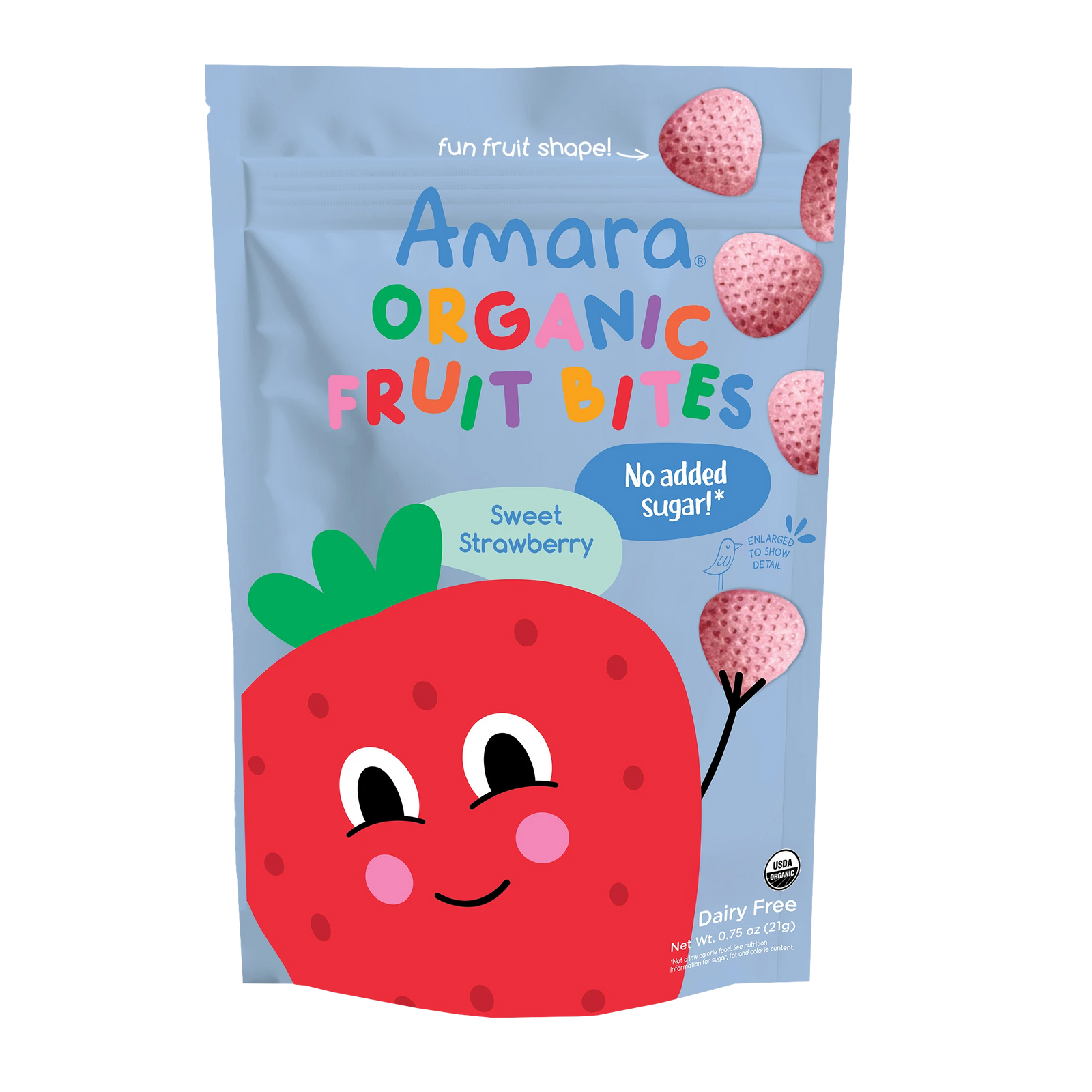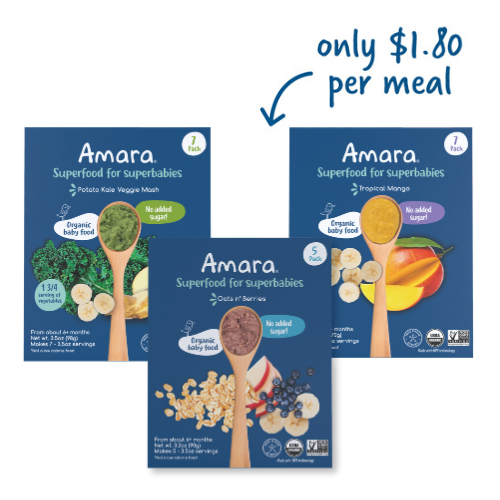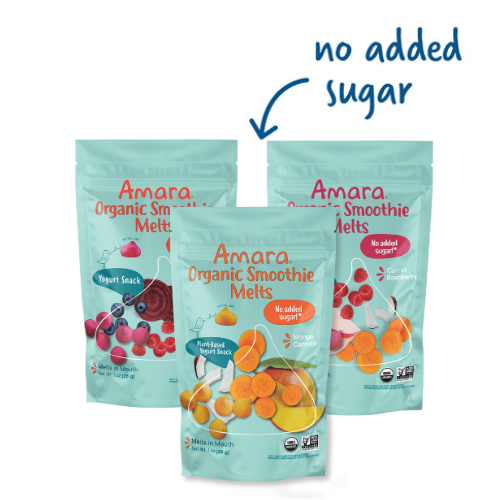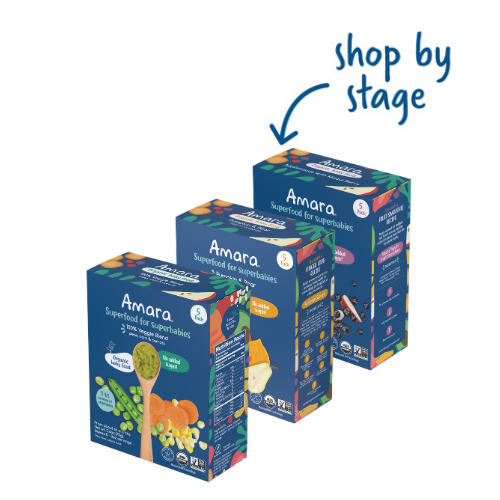
If you have ever been out in public (LOL), you have probably seen a young child on a “sugar high” — or worse, struggling through the aftermath of one.
As a parent, I am SO curious about the effects sugar has on my children — because it’s really so palpable. (And often, painful to deal with…) This week, we’re diving into the (limited) evidence on how sugar impacts the developing brain.
We’ll cover:
- Some basics about early brain development;
- What science says about sugar’s neurological effects;
- Differences between various types/sources of sugar; and
- Strategies to reduce sugar intake.
Here goes, friends:
Early Brain Development
The first three years of life constitute a period of exceptional and unparalleled brain growth and development. By the time a baby turns one year old, her brain will have doubled in size and grown to about 70% of its adult size; by the time she’s two, her brain will be about 80% of its adult size; and by three, it’s 85%. And it’s not just growth alone — there’s an unbelievable amount of structural development happening as well: gray and white matter formation, myelination, synaptogenesis, and pruning. The brain is at work learning how to make connections, process the world, and put things together. It’s really an exciting time.
And the brain — all the more so during this exact developmental burst^^ — demands a lot of energy. In fact, the brain is responsible for more than half of an infant’s base metabolic rate. (For adults, this number is closer to ¼-⅕, just for reference.) As such, neurological functioning and healthy growth and development require quite a bit, nutritionally speaking.
Indeed, a quality diet helps nourish the growing brain, and even has implications for a child’s attention span, temperament, learning capacity, memory, and motivation down the line. Yes: feeding a baby or toddler well is about so much more than physical/linear growth or weight gain.
Brain food, friends!
In specific, the brain needs glucose in order to function, grow, and develop well. In fact, it’s glucose that is the primary source of energy for the brain. (Just in case: glucose is a simple sugar that’s the basis of most carbohydrates. We’ll get to the various differences between categories and types of sugar shortly…)
So we all — and our growing children — need glucose to fuel our brains… and yet, at the same time, too much sugar can pose problems. Let’s take a look:

Sugar and the Developing Brain: What Science Says (So Far)
You may have heard a lot recently about sugar being an “addictive substance” — and while there’s certainly reason enough to believe that it may be, we’re still in some ways waiting for the science to catch up. Thus far, there’s quite a bit of research in animals demonstrating that sugar can exert effects that mirror behaviors associated with addiction, but there’s little explicit evidence demonstrating the same among humans (yet). As with so many factors in nutrition and health, we just need more data.
That said, the conclusions of animal studies are still relevant, and many have shown that consuming fructose-sweetened drinks can alter brain structure and brain function.
There are other tangential effects we know more about, but are often hard to quantify. Most notably, babies and toddlers are in the midst of a critical window for forming their taste preferences, and especially given that humans are literally hard-wired to enjoy sweet foods (thanks, evolution), babies and toddlers are prone to prefer sugary or sugar-sweetened foods. And as much as we may joke about developing a “sweet tooth,” babies and toddlers are at a high risk for just that: excessive exposure to sweet flavors can affect their taste preferences — and this can have potentially life-long ramifications.
Scientists are learning that fructose exposure starts *early. According to one study, mothers who consumed beverages sweetened with high fructose corn syrup or juice produced breastmilk with elevated fructose levels, and researchers are even studying how prenatal sugar consumption might influence infants in utero.
A baby or toddler who learns to expect and strongly prefer sugary foods and beverages is more likely to seek out those foods into childhood and adulthood, and we know that consuming sugar in excess carries all kinds of health risks, ranging from obesity, metabolic syndrome, and inflammatory conditions to cavities, decreased cognitive functioning, and compulsive overeating habits. Some even speculate as to whether excess sugar and highly processed carbohydrate consumption could be linked to increasing childhood attention deficit disorder (ADD) diagnoses nationwide.
At the risk of being hyperbolic (and sardonic): a spoonful of sugar is no laughing matter.
Sugar is non-nutritive, and there’s no reason why any of us need it.
And yet, many foods contain naturally existing sugars, including breast milk. So what are we to make of this?
Let’s pause to consider the different types/sources of sugar, because not all sugar is created equal.

Different Kinds of Sugar
There are two general categories of sugar:
- Monosaccharides — these are made up of a single sugar unit (that cannot be broken down) and include fructose, glucose, and galactose; and
- Disaccharides — these are made up of two monosaccharides bound together; they include sucrose (aka table sugar, which is one part glucose and one part fructose), lactose (glucose and galactose), and maltose (glucose with glucose). (For reference, high fructose corn syrup is a synthetic disaccharide composed of fructose and glucose in varying amounts.)
Different sugars^^ all have different effects on the body and the brain.
Glucose and fructose, for example, follow separate pathways entirely in the body — glucose moves through the body quickly and provides energy for the brain and other organs almost immediately, while fructose is not an immediate source of energy for the brain.
Nutritionists and health professionals stress that there is a major dividing line between added sugar/sweeteners and naturally occurring sugar. Many Americans mistakenly believe that fructose is healthy because it is commonly found in fruits… but added fructose in fact presents major health problems, probably more so than any other type of sugar (especially given the ubiquity of high fructose corn syrup). Added fructose is associated with an array of health conditions (including metabolic syndrome, hypertension, insulin resistance, kidney disease, and diabetes); and it may even contribute to unhealthy eating behaviors (such as increased food seeking) and added fat production and storage.
In short, when fructose is added to foods, it makes those foods sweeter, provides absolutely no nutritional value, and introduces potential harm.
*However, foods that naturally contain fructose contain other nutrients and properties that offset some of the negative effects of sugar on the body and brain. To begin, consider the proportions: the amount of fructose that exists in a piece of whole fruit is vastly different from the amount of fructose in a sweetened beverage. If you take a peach, for example, fructose makes up about 1% of its weight, whereas fructose accounts for some 50% of the weight of high fructose corn syrup. This is like the difference between an ounce of non-alcoholic beer and an ounce of liquor — it’s huge.
Foods like fruits, vegetables, legumes, and fiber-rich grains, all of which contain sugar or carbohydrates in their “natural” states, are excellent sources of nutrition and energy. They follow a separate digestive path; contain gut-healthy fiber, vitamins, and minerals; are more satiating; take longer for the body to break down; and help the body produce energy. The positive effects of fiber alone are far-reaching: fiber is beneficial for the microbiome, instigates anti-inflammatory effects, and helps regulate hormones that influence satiety, which can ultimately result in healthier eating habits.
To repeat: not all sugar, and not all carbohydrates, are created equal.
*This is why nearly every professional health organization today recommends avoiding or limiting added sugars (among children and adults):
- The American Heart Association advises children younger than two years avoid (added) sugar entirely in their diets.
- The World Health Organization recommends limiting added sugars to less than 5% of daily caloric intake.
- The American Academy of Pediatrics advises against any added sugar for babies and toddlers less than two, and specifically advises against any fruit juice for babies less than one-year-old, specifically because of its high sugar content.

Strategies to Cut Down on Sugar
First of all, know that it can be tough! Sugar is seemingly everywhere and in everything these days, so it can take quite a bit of diligence — and it’s important to acknowledge that. Unfortunately we live in a world where convenience and costs have taken a precedence over health and wellbeing, so if you feel like you’re fighting an uphill battle, know that you’re not alone.
The reality, according to numerous studies, is that a majority of babies are exposed to added sugars; one third of toddlers eat candy; nearly half consume desserts of various kinds, and at least one third consume juice regularly. According to the American Academy of Pediatrics, sugar is 17% of the average child’s calorie intake on any given day.
So we have some room for improvement.
Here are some quick-reference tips to help you and your family avoid sugar where you can:
1. Check the food label.
New regulations (thankfully) now require that companies specifically list added sugar content on food/nutrition labels. Check to be sure there isn’t any. Beyond the obvious culprits (sweets, cakes, desserts, etc.), watch out too for things like condiments (ketchup, dressings, sauces, etc.), cereals, breads, crackers, and dairy (yogurt, flavored milks and non-dairy milk, smoothies, etc.).
2. Opt for whole foods and homemade meals when you can.
As a general rule, processed and packaged foods are more likely to have sugar lurking somewhere in their ingredients than fresh, real, and homemade food. We can’t all do it all all the time, but every time you can prepare a snack or meal at home, that’s a help. The beauty here is that we needn’t sweat over naturally sweet foods — things like berries, mango, banana, beets, or even dates are all great stand-ins that also deliver nutrients and health benefits.
3. Check your beverages.
Sugar-sweetened beverages are a MAJOR contributor to excess sugar consumption in this country. According to some studies, sugary drinks account for 25% of a toddler’s daily energy (yikes!). Ask yourself: what does your baby/toddler usually drink? Try to avoid sugar-sweetened drinks and stick to water or herbal tea. *If you do choose to offer juice, consider limiting it — perhaps by serving it once or twice per week rather than daily, keeping glasses to a minimum (one serving rather than 2-3 per day), or cutting it with water. I love the idea of treating juice more like a specialty or a dessert, too — in my family we have small glasses of O.J. on vacation, and it’s always such a treat. (And another great solution is to simply offer whole fruit!)
4. Kick sugar out of the house.
It may sound obvious, but choosing to remove items with added sugar from your fridge/pantry will by default result in decreased consumption. I’m not a fan of the entire concept of “dieting,” but the idea that “if it’s not here, you can’t eat it” holds true.
5. Swap it out.
Consider these easy swaps:
- Instead of fruit snacks — try freeze-dried fruit with no added ingredients or Amara organic yogurt bites.


- Instead of breakfast cereal — try oatmeal or whole grain flake cereal with added blueberries or banana (or any seasonal fruit!) for a natural sweetness, or Amara Oats n’ Berries.
- Instead of cookies or “energy bars” (which are often no different than candy bars in terms of their sugar content, UGH!) — try a whole grain bagel with cheese or cream cheese.
- Instead of packaged yogurt smoothies — try plain yogurt with added fruit for sweetness.
- Instead of cakes/ice cream/sweets/etc. for dessert — try whole fruit or fruit salad.
- Instead of juice — try herbal tea with a squeeze of lemon.

The Takeaway:
Introducing our babies, toddlers and young children to excess and exceedingly sugary foods can actually shape their lifelong preferences for what they prefer to eat toward the sweet end of the spectrum — a development which could also come with some unwanted health effects in childhood and adulthood.
Our children don’t need sugar, and the longer we can hold off on giving it to them, the better. And if it seems hard (it is!), it’s also helpful to remember that the baby/toddler years are actually such a window of opportunity — this is the ideal time where we can help our children develop a palate for healthy, nourishing foods.
For more about starting solids and feeding little ones — ranging from How to Start Solids Without the Stressto How to Raise a Healthy Eater — head over to Amara’s blog page for more. We’re committed to changing the food industry from the bottom up — starting with the youngest of eaters (babies!), because they deserve healthy, delicious, nutritious foods that set them up for a lifetime of healthful eating — without all the time or fuss on your end. All of our organic baby food blends and toddler yogurt melts are made from the freshest ingredients and prepared using our very own nutrient protection technology that seals in all the nutrients and preserves foods in their original structure. It’s as natural as homemade and as easy as store bought! And we promise you’ll never see anything you don't like — including ANY kind of added sugar — on our ingredient labels.
References:
SS Baker et al., Guidance for Beverages in the Diets of Children Younger Than 2 Years. JPGN 2021
PK Berger et al., Associations of maternal fructose and sugar-sweetened beverage and juice intake during lactation with infant neurodevelopmental outcomes at 24 months. Am J Clin Nutr 2020
PK Berger et al., Association of Prenatal Sugar Consumption with Newborn Brain Tissue Organization. Nutrients 2021
Cohen JFW, Rifas-Shiman SL, Young J, Oken E. Associations of prenatal and child sugar intake with child cognition. Am J Prev Med 2018
CR Freeman et al., Impact of sugar on the body, brain, and behavior. Frontiers In Bioscience, Landmark, 2018
D Ludwig, https://davidludwigmd.medium.com/food-for-thought-how-what-you-eat-affects-your-brain-609de7f6a76(2016)
R Murray, Savoring Sweet: Sugars in Infant and Toddler Feeding. Ann Nutr Metab 2017
MB Vos et al., Added Sugars and Cardiovascular Disease Risk in Children: A Scientific Statement From the American Heart Association. Circulation 2017







Leave A Comment